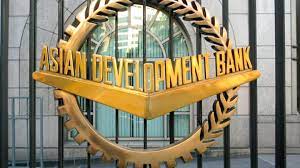Manila October 4 2023: Pakistan central bank will likely raise the policy rate from the 22% it set in July 2023 to gradually reduce inflation to achieve real positive rates says ADB in its report.
The Bank expect Inflation to ease in FY2024, as base-year effects set in, food supply normalizes, and inflation expectations moderate. In addition, the central bank will likely raise the policy rate from the 22% it set in July 2023 to gradually reduce inflation to its medium-term target of 5%–7%.
The central bank has agreed to achieve positive real interest rates, refrain from introducing new refinancing schemes, and contain refinancing credits.
However, significant inflationary pressures remain. Sharp increases in petroleum, electricity, and gas tariffs are envisaged under the program. As import and exchange rate controls are eased, the rupee could further weaken, raising the cost of imported goods. El Niño and the continuing Russian invasion of Ukraine could disrupt supplies and raise prices of wheat, rice, and other basic foodstuffs. Hence, inflation will likely remain high at about 25% in FY2024, significantly higher than projected earlier in April 2023.
The economy’s near-term prospects will heavily rely on progress under the economic adjustment program
The program aims to stabilize the economy and rebuild buffers for domestic and external balance, thereby providing a foundation for a possible successor program under the new government expected to be elected in the first quarter of calendar year 2024. The program involves fiscal consolidation, monetary tightening, and a return to a market-determined exchange rate, as well as structural reforms in energy, state-owned enterprises, banking, and climate resilience.
Easing import and exchange rate controls will have competing effects on the current account balance and reserves
Imports should increase as economic activity recovers and as businesses find it easier to import inputs. But exports should also recover, despite slower global growth, on greater availability of inputs, improved farm output, and a more competitive rupee. On balance, the current account deficit is projected to increase to about 1.5% of GDP in FY2024. Despite the larger deficit, international reserves should grow. The new program with the IMF has improved the prospects for multilateral and bilateral financing, while a more market-determined exchange rate is expected to stabilize the currency market and encourage remittance inflows through official channels.
Fiscal tightening will come from raising revenues and containing spending
The FY2024 budget targets a primary surplus of 0.4% of GDP and an overall deficit of 7.5% of GDP, gradually declining over the medium term. Tax revenues are programmed to hit 10.3% of GDP in FY2024. Provincial spending will be cut by 0.4% of GDP and spending on defense and energy subsidies will be limited, while protecting priority social and development outlays. The government has committed to granting no further tax amnesties or issuing new tax preferences or exemptions.
The economy is projected to recover modestly in FY2024 with base effects from the post-flood recovery
Uncertainty will linger, though, and stabilization measures will limit the growth of demand. Growth in FY2024 is projected to be 1.9%, slightly lower than the ADO April 2023 forecast (Table 2.3.3). The revised projection assumes a modest rebound in demand, with private consumption and private investment growing by about 3% and 5%, respectively. Fiscal and monetary tightening will crimp demand, as will inflation staying in double digits. On the other hand, implementation of the economic adjustment program and a likely smooth general election should boost confidence, while the easing of import controls should support investment as fiscal tightening restrains public consumption. On the output side, better weather conditions will enable an increase in the area under cultivation and in yields, supporting recovery in agriculture. The government’s relief package of free seeds, subsidized credit, and fertilizer will also help. In turn, the recovery of farm output will feed through to industry, which will also benefit from the increased availability of critical imported inputs. The recovery of output will enable exports to pick up, although imports will grow much faster, due to pent-up demand. However, the downside risks are significant, including from global price shocks and slower global growth.
Related Posts










